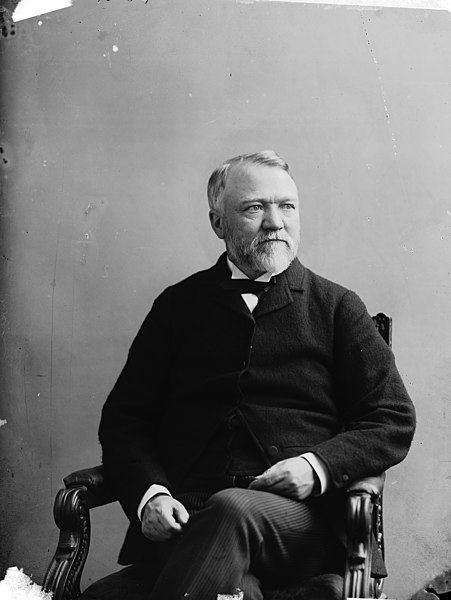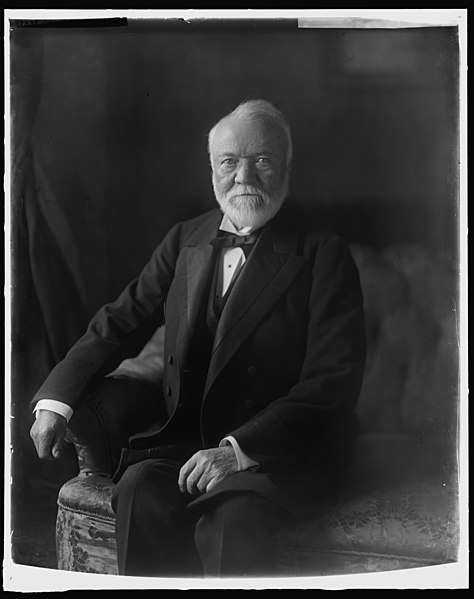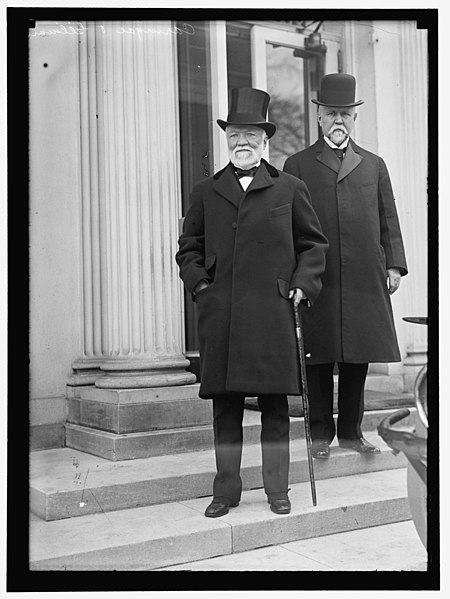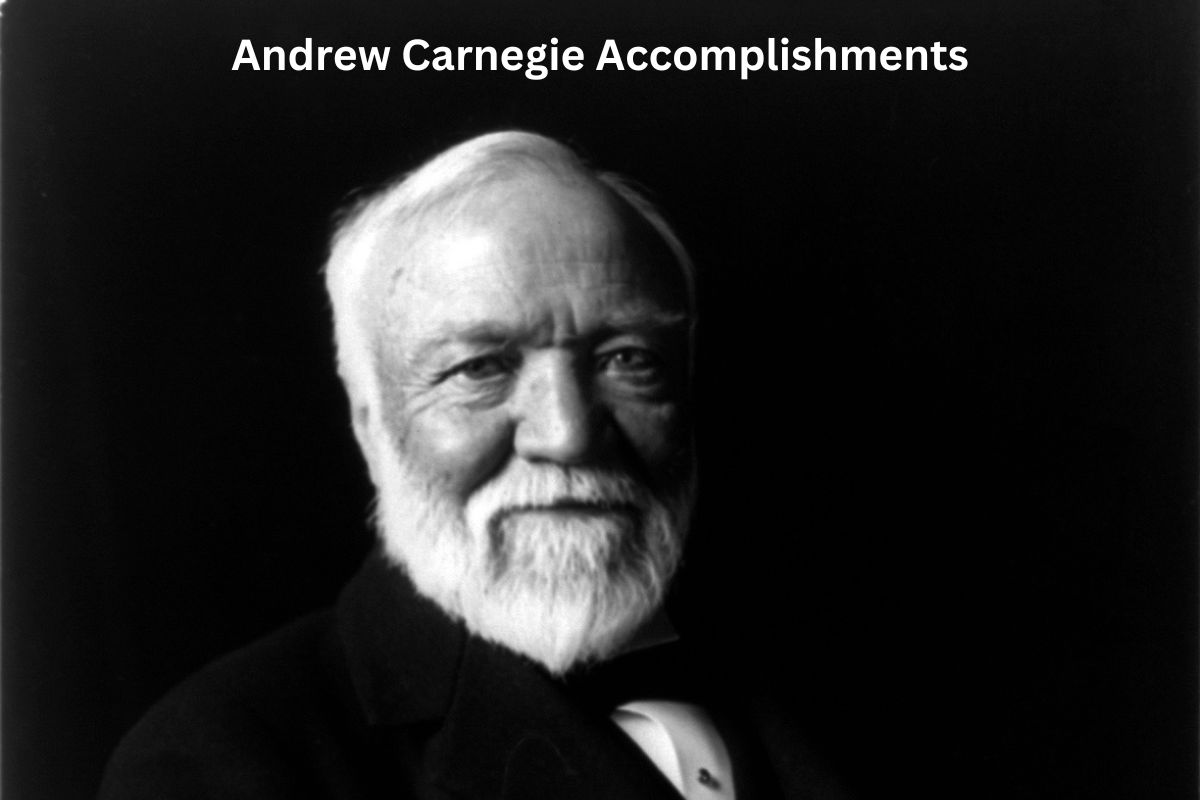Andrew Carnegie, a Scottish-American industrialist and philanthropist, left an indelible mark on American business and society during the late 19th and early 20th centuries.
His remarkable accomplishments ranged from revolutionizing the steel industry to founding cultural institutions and promoting the concept of philanthropy.
In this overview, we will delve into the key accomplishments and contributions of Andrew Carnegie, highlighting his lasting legacy in business, education, philanthropy, and more.
Accomplishments of Andrew Carnegie
1. Dominance in the steel industry
Andrew Carnegie played a pivotal role in revolutionizing the steel industry in the late 19th century. He founded and led the Carnegie Steel Company, which became the largest and most profitable steel manufacturer in the United States.
Also Read: Facts About Andrew Carnegie
His innovations in steel production, including the widespread adoption of the Bessemer process and vertical integration, allowed his company to produce steel at unprecedented scales, making it a dominant force in the American industrial landscape.

2. Pioneering vertical integration in business
One of Andrew Carnegie’s most significant contributions to the business world was his pioneering use of vertical integration in the steel industry.
He vertically integrated his steel operations by owning and controlling every aspect of the production process, from mining the raw materials (such as iron ore and coal) to manufacturing steel, transportation, and even distribution.
Also Read: Timeline of Andrew Carnegie
This approach allowed him to streamline operations, reduce costs, and maintain a competitive edge. Carnegie’s success with vertical integration set a precedent for modern corporate structures and strategies.
3. Funding and founding Carnegie Hall
Andrew Carnegie’s philanthropic endeavors extended beyond business. In 1891, he funded the construction of Carnegie Hall in New York City.
Carnegie Hall is renowned worldwide for its exceptional acoustics and has hosted countless musical performances, including classical concerts, jazz, and popular music.
Carnegie’s vision was to provide a world-class venue for cultural enrichment and the arts, and his contribution to the construction of Carnegie Hall remains a lasting testament to his commitment to the cultural and artistic development of society.
4. Vast philanthropic contributions
Andrew Carnegie is perhaps best known for his immense philanthropic contributions. After selling his steel business, he dedicated his life to giving away his fortune to various causes. His philanthropic endeavors included the establishment of numerous foundations and endowments aimed at improving society. Some of his most significant contributions include:
- Funding thousands of public libraries: Carnegie funded the construction of over 2,500 public libraries worldwide, making knowledge and education more accessible to communities.
- Support for education: He donated substantial amounts to colleges and universities, including the creation of the Carnegie Institute of Technology (which later became Carnegie Mellon University) and the Tuskegee Institute, among others.
- Scientific research: Carnegie provided funding for scientific research institutions and projects, promoting advancements in science and technology.
- Cultural institutions: He supported museums, art galleries, and cultural organizations, fostering artistic and cultural growth.

5. Establishing Carnegie Libraries
In 1910, Andrew Carnegie founded the Carnegie Endowment for International Peace, an organization dedicated to promoting peace and resolving international conflicts.
The endowment conducts research and policy analysis on global issues, striving to prevent armed conflicts and enhance international cooperation. Over the years, it has played a crucial role in addressing diplomatic challenges and promoting peaceful resolutions to conflicts.
6. Founding the Carnegie Endowment for International Peace
Another significant philanthropic endeavor of Andrew Carnegie was the establishment of the Carnegie Corporation of New York in 1911.
This foundation was created to support various charitable activities, with a focus on education, scientific research, and international peace efforts.
The Carnegie Corporation continues to make substantial contributions to these fields, funding projects and initiatives that have a positive and lasting impact on society.
7. Establishing the Carnegie Corporation of New York
In 1911, Andrew Carnegie established the Carnegie Corporation of New York, a philanthropic foundation with a significant endowment. The corporation was created to continue his legacy of charitable giving and support various causes.
It has played a pivotal role in funding educational institutions, cultural organizations, scientific research, and initiatives that promote social welfare and well-being. Through its grants and contributions, the Carnegie Corporation has made a lasting impact on numerous projects and endeavors.

8. Contributing to the founding of Carnegie Mellon University
Carnegie’s philanthropic efforts extended to the field of education. He provided substantial funding for the establishment of the Carnegie Technical Schools in Pittsburgh in 1900.
Later, these schools evolved into Carnegie Institute of Technology, which eventually merged with the Mellon Institute of Industrial Research to become Carnegie Mellon University in 1967.
Carnegie Mellon is renowned for its contributions to technology, engineering, and the arts and continues to be a prestigious research institution.
9. Authoring “The Gospel of Wealth” essay
In 1889, Andrew Carnegie penned a seminal essay titled “The Gospel of Wealth.” In this essay, he articulated his beliefs about wealth and philanthropy. Carnegie argued that the wealthy had a moral obligation to use their riches to benefit society.
He encouraged fellow millionaires to redistribute their wealth for the common good and invest in institutions that could help alleviate societal ills.
“The Gospel of Wealth” had a profound influence on the concept of philanthropy in the United States and shaped discussions about wealth and social responsibility.
10. Involvement in labor relations and worker conditions
Andrew Carnegie’s legacy also includes his involvement in labor relations, which had both positive and negative aspects.
He faced significant labor disputes, most notably during the Homestead Strike of 1892, when a violent conflict erupted between workers and management at one of his steel mills.
Over time, Carnegie evolved his stance on labor relations and worker conditions. While he initially adopted a tough approach, he later supported efforts to improve working conditions and workers’ rights. This transformation reflected a growing awareness of social issues and contributed to the development of labor rights in the United States.
